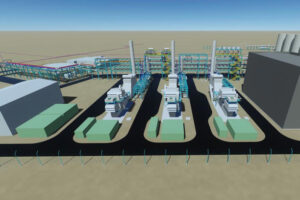Turning buildings into energy hubs will speed up decarbonisation
While buildings are a major contributor to carbon output, this means they can also play a key role in reducing emission levels.
A new paper from Buildings Performance Institute Europe (BPIE) lays down the 10 principles that pave the way to a decarbonised, flexible, resilient and efficient energy system. These principles are meant to encourage the transformation of buildings to micro energy hubs. By taking up this role, buildings can be flexibly connected and synchronised with the energy system, being able to produce, store and/or consume energy efficiently.
Energy hubs can support the transition from a centralised fossil fuel based system to a renewable, interconnected and variable decentralised system. They could reduce demand peaks and unlock demand side storage and flexibility.
The benefits can be various, from empowering users to control their own renewable energy production and consumption to improving living conditions; cutting energy bills and facilitating the surge of renewable energy as well as electrical vehicles, and even reinforcing energy security.
The 10 principles identified are:
- Maximising a building’s energy efficiency first
- Increasing on-site or nearby renewable energy integration production and self-consumption
- Stimulating energy storage capacities in buildings
- Incorporating demand response capacity in the building stock
- Decarbonising the heating and cooling energy for buildings
- Empowering end-users via smart meters and controls
- Making dynamic price signals available for all consumers
- Fostering business models aggregating micro energy hubs
- Building smart and interconnected districts
- Building infrastructure to drive further market uptake of electric vehicles
One paramount aspect to highlight is that we should first maximise a building’s energy efficiency level in order to successfully apply the other principles. The principles are important separately, but more impactful once considered together.
While the paper points out key success factors for each principle, the prevailing theme remains the development of an enabling and supportive policy framework. Greater efforts should be made to achieve nearly zero-energy standards; to promote self-consumption of renewable energy; and to achieve (through market incentives) the EU Commission’s pledge to replace 80% of existing meters with smart meters ‘where cost-effective’ by 2020.
The forthcoming autumn Energy Efficiency Package, as well as the other legislative proposals expected towards the end of 2016, should encompass the full scope of micro energy hubs. By taking these steps the EU would be closer to aligning its regulation with the ambitions put forward during COP21. As buildings account for around 40% of the total energy consumption and 36% of the CO2 emissions in Europe, they possess the biggest untapped mitigation potential.
Download the Smart Buildings in a Decarbonised Energy System paper and find out more.















